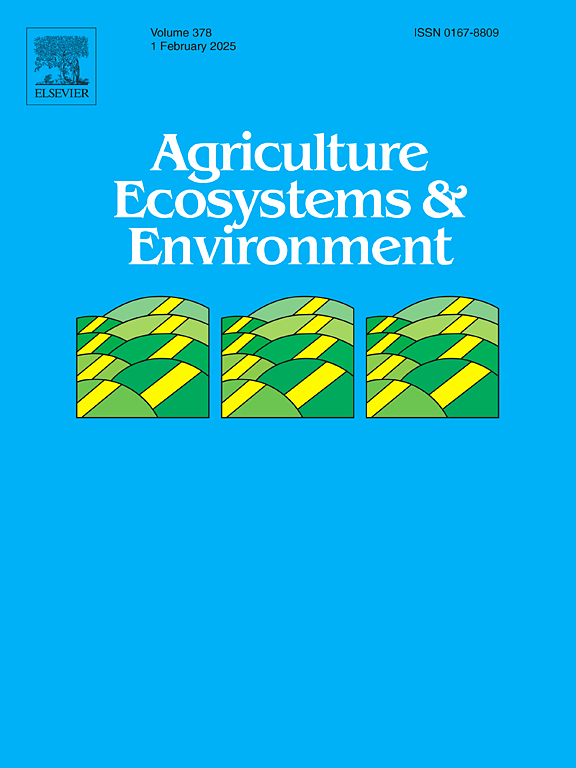Using the EU’s Common Agricultural Policy to improve the habitat for farmland birds in landscapes with excessively large arable fields: Buffer strips in Slovakia
IF 6
1区 农林科学
Q1 AGRICULTURE, MULTIDISCIPLINARY
引用次数: 0
Abstract
Buffer strips are a key element of the EU's Common Agricultural Policy (CAP) for 2023–2027 in addressing declines of farmland bird populations triggered by agricultural intensification. Here, we focus on a voluntary eco-scheme in Slovakia, a country in Central-Eastern Europe, where farmers implement buffer strips to counter challenges posed by extensive fields and a lack of nonproductive areas. Based on experience from other countries, buffer strips may support farmland bird populations, but results from landscapes characterised by excessively large arable fields (frequently covering 50 + ha), typical for some former socialist Central-Eastern European countries including Slovakia, are lacking. This study involves 11 farms participating in the whole farm eco-scheme, with 40 study sites (established in a paired design) selected for bird counts conducted in spring and summer 2023. The data contained records of 2060 bird individuals, representing 42 species. Buffer strips significantly enhanced bird abundance and species richness compared to control arable fields. Positive impacts were also found for threatened species, with ground-nesting birds benefiting the most. The higher abundance of granivorous, folivorous, and insectivorous species in the buffer strips highlights their diverse advantages. These results indicate that buffer strips emerge as crucial habitat that provides suitable nesting and foraging sites for farmland birds. Based on our results, we recommend continuing buffer strip support within CAP, emphasising reduced bureaucratic demands and enhanced financial incentives. The findings underscore the importance of agri-environmental measures in the maintenance of farmland bird species, which applies to landscapes dominated by large fields. Future research should evaluate the broader effectiveness of the eco-scheme, for example, by focussing on the long-term population trends of birds.
求助全文
约1分钟内获得全文
求助全文
来源期刊

Agriculture, Ecosystems & Environment
环境科学-环境科学
CiteScore
11.70
自引率
9.10%
发文量
392
审稿时长
26 days
期刊介绍:
Agriculture, Ecosystems and Environment publishes scientific articles dealing with the interface between agroecosystems and the natural environment, specifically how agriculture influences the environment and how changes in that environment impact agroecosystems. Preference is given to papers from experimental and observational research at the field, system or landscape level, from studies that enhance our understanding of processes using data-based biophysical modelling, and papers that bridge scientific disciplines and integrate knowledge. All papers should be placed in an international or wide comparative context.
 求助内容:
求助内容: 应助结果提醒方式:
应助结果提醒方式:


